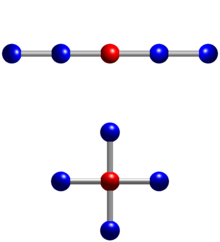Derivation
This formula can be obtained by writing out the four Taylor series of  and
and  at the point
at the point  , up to terms of h3 (or up to terms of h5 to get an error estimation as well), evaluating each series at
, up to terms of h3 (or up to terms of h5 to get an error estimation as well), evaluating each series at  and
and  respectively (to get everything in common terms of
respectively (to get everything in common terms of  ), and solving this system of four equations to get f ′(x). Actually, we have at points x + h and x − h:
), and solving this system of four equations to get f ′(x). Actually, we have at points x + h and x − h:

Evaluating  gives us
gives us

The residual term O1(h4) should be of the order of h5 instead of h4 because if the terms of h4 had been written out in (E1+) and (E1−), it can be seen that they would have canceled each other out by f(x + h) − f(x − h). But for this calculation, it is left like that since the order of error estimation is not treated here (cf below).
Similarly, we have

and  gives us
gives us

In order to eliminate the terms of ƒ(3)(x), calculate 8 × (E1) − (E2)

thus giving the formula as above. Note: the coefficients of f in this formula, (8, -8,-1,1), represent a specific example of the more general Savitzky–Golay filter.





























